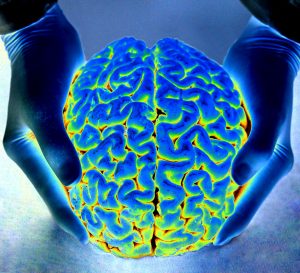Bipolar Disorders Library
The Bipolar Disorders Library provides reliable and quality assessed information. This information comes from peer-reviewed systematic reviews covering over 300 topics on bipolar disorder I and II. These topics include signs and symptoms, treatments, diagnosis, causes and antecedents, outcomes, co-occurring conditions, incidence and prevalence, the physical features of bipolar disorder, and insights for families. Topics can be accessed by clicking on the links above. Or use the drop-down menu or search bar on the left or click on the tabs below.
There are two levels of information on each topic. The first is a Factsheet that provides general information describing the topic and the evidence that is available on that topic. The second is a Technical Commentary that provides more detailed information, including the topic’s background, methods, detailed results, and links to references. Printable PDFs of factsheets and technical tables are available to download from each topic page.
Image: ©vectorfusionart – stock.adobe.com

Diagnosis and assessment
A diagnosis of bipolar disorder is not straight-forward, as symptoms often vary across individuals. This category contains information about how bipolar I and II disorders are diagnosed, their early detection, and the assessment tools used to measure the symptom severity. Click on the links or the tabs below to access the information, or browse and search via the section on the left. Image: ©adiruch na chiangmai - stock.adobe.com

Signs and symptoms
Bipolar disorders are a group of disorders characterised by episodes of mania, or hypomania, and depression. In between episodes, mild symptoms of mania and/or depression may be present. Bipolar I disorder is determined by the existence of mania, which may include psychotic features, while bipolar II disorder is determined by less severe hypomania. Cyclothymic disorder is an overall milder form of bipolar disorder, however symptoms occur fairly often and constantly. Click on the links or the tabs below to access the information, or browse and search via the section on the left. Image: ©Christos Georghiou www.atstockillustration.com - stock.adobe.com

Treatments
The treatment of bipolar disorder is complicated, requiring a treatment plan tailored to each individual’s needs, which must be overseen by mental health professionals. This topic covers the range of treatment options available, and is extensive and sometimes controversial comprising both traditional and alternative approaches. Any information gained from this topic area needs to be discussed with a mental health professional before any changes to treatment plans are made. Click on the links or the tabs below to access pharmaceutical, non-pharmaceutical, and therapy treatment options, or browse the drop-down menu on the left. Image: ©freshidea - stock.adobe.com

Risk factors and antecedents
Risk factors for bipolar disorder include both genetic and environmental factors. The library provides information on familial heritability and environmental risk factors that have been associated with the disorder. We also include information on the antecedents of bipolar disorder, which are potentially very early signs of the disorder. Click on the links or the tabs below to access this information, or browse via the drop-down menu on the left. Image: ©matiasdelcarmine - stock.adobe.com

Illness course and outcomes
The course and outcomes of bipolar disorder vary widely between individuals. This category considers the outcomes that affect day to day life such as rates of recovery, relapse, and employment. It also considers outcomes in different patient groups, including children, people in the early stages of the illness, people with co-occurring substance misuse, and parents. Click on the links or the tabs below to access all the information, or browse the drop-down menu to the left. Image: ©Pavel Timofeev - stock.adobe.com

Insights for families
Families of people with bipolar disorder may also be affected by the disorder. This category provides information on factors that impact on the family unit, and also cognitive, psychological, and physiological alterations in relatives, which are related to shared genetic factors. Click on the tabs below to access the information, or browse via the drop-down menu to the left. Image: ©Kudryashka - stock.adobe.com

Physical features
People with bipolar disorder can have physical alterations in their central nervous system. In this category these alterations have been organised into functional and structural changes. Click on the links or the tabs below to access this information, or browse via the drop-down menu on the left. Image: ©stock.adobe.com

Co-occurring conditions
People with bipolar disorder may have co-occurring (comorbid) mental and/or physical disorders. Common comorbid conditions include anxiety disorders, personality disorders, substance use disorders, and migraine. Click on the links or the tabs below to access the information, or browse via the drop-down menu on the left. Image: ©Maksym Dykha - Fotolia - stock.adobe.com

Incidence and prevalence
A population perspective provides epidemiological estimations of the prevalence and incidence of bipolar disorder in different populations and regions worldwide. This category also considers the burden of bipolar disorder in terms of its cost to the individual and society. Click on the links or the tabs below to access the information, or browse via the drop-down menu on the left. Image: ©tai111 - Fotolia – stock.adobe.com

General information
This section includes general information on privacy and security, as well as answers to frequently asked questions. Click on the tabs below to access the information, or browse the drop-down menu to the left. Image: ©DavidPinoPhotography - stock.adobe.com
Green - Topic summary is available.
Orange - Topic summary is being compiled.
Red - Topic summary has no current systematic review available.
